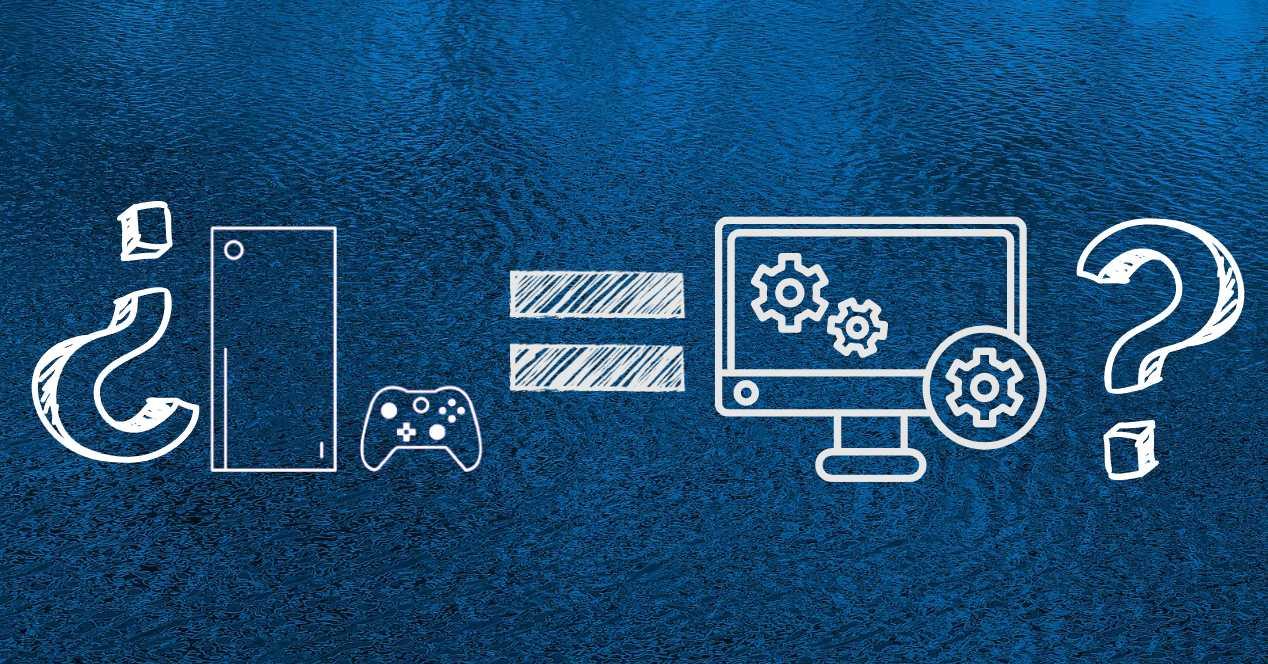In four generations of Xbox consoles, we’ve never seen a version of it that works like a PC. While the Xbox 360 was not based on computer hardware, the first and later Xbox One and Xbox Series were. It was even bred in its day as a low-cost computer. What’s stopping Microsoft from doing this?
Xbox has some differences from a PC
We have to start from the fact that Xbox runs three operating systems at the same time, the first which is Hyper-V is the one that has direct access to the hardware and gives it to each of the two operating systems in the following way fixed and equitable, and this can be summed up as follows:
- The number of cores and execution threads assigned to each of the systems.
- How much RAM memory is assigned to one operating system or another.
- The utilization percentage of accessory components, such as the GPU, is assigned to each system.
Now, the first of the operating systems is called Game OS which runs all instances of the game, as long as it is active, the resources corresponding to the Shared OS are not used, but are on standby. When is the change? When we access the game menu or use applications such as Netflix, which run on a version of Windows based only on the Universal Windows Platform, UWP, and therefore cannot load applications under the Win32 API , it is because of this reason that we cannot load PC games to Xbox.
If you think about it, Microsoft could create a fusion between PC and Xbox in the same device, but by replacing the Shared OS part with that of a classic Windows, the problem is that then the hardware needed to run both environments would increase considerably.
What would your hardware look like?
The idea of creating a PC based on Xbox hardware may seem like a good idea at first, however, with it Microsoft loses the ability to fund the hardware with proceeds from game and accessory royalties, as well as subscriptions. like Game Pass. So the base console should sell for $100-$200 more.
Plus, that those in Redmond couldn’t afford a bigger chip than the Xbox Series X, which is 360mm.2, a size well above PC chips, which despite being a single chip that includes a processor and a graphics card is at the ideal limit in terms of size. So the chip used in this Xbox Series as a PC would be the same as in Microsoft’s top console. However, although the chip is the same, the PCB used would be different.
More memory for apps
The Xbox Series memory system is based on two different memory accesses:
- The first of these is memory access from the GPU, which is inconsistent with system RAM. 10 GB on Xbox Series X and 8 GB on Series S are exclusively accessible and use the entire GDDR6 bus and therefore the two memory channels of each chip on the card exclusively for the graphics processor.
- The second access is through the processor’s memory controller, which has a 256-bit bus, but at memory clock speed. GDDR6 operates at 1/4 of its transfer speed, so take 56 GB/s of bandwidth on one of the two channels. The other is left to the GPU which is limited to using 224 GB/s. Therefore, on Xbox, certain parts of RAM go to different bandwidths.
We must start from the fact that in Xbox Series we have 16 GB of memory on a 320-bit bus, which is an abnormal figure and is due to the use of 1 and 2 GB chips in the console. It would therefore be possible to create a PC with a capacity of 20 GB and allocate this additional memory to the Windows part of the operating system. The problem would rather come from the applications in Windows environment, the processing resources would certainly be limited, since the majority would be allocated to games and almost 80% of the resources could not be used, which would be a huge waste.
Xbox and PC are different beasts
Contrary to what many think, an Xbox as a PC would not allow us to install any Windows application, but only those that are usually developed for UWP, period, so we would not lose a large part of the catalog of Windows applications. The only incentive from Microsoft would be to port Office and other apps, but the universal apps fiasco was so big that they themselves let the platform fall and languish, which was a failed attempt. to renew Windows
Adding Windows as-is to Xbox is a much bigger effort than people realize. Although they are binary compatible, there are a number of countermeasures that prevent this from being done and the main one is non-technical. What will assemblers and computer manufacturers think if suddenly Microsoft is competing with a much cheaper system? Consider that one of the main sources of money they have are the Windows licenses sold with each PC.
In any case, Xbox has a different boot system than PC and therefore it is not easy to complete the process. This was done to prevent anyone from installing Windows on the Xbox to protect their core business.
Table of Contents









